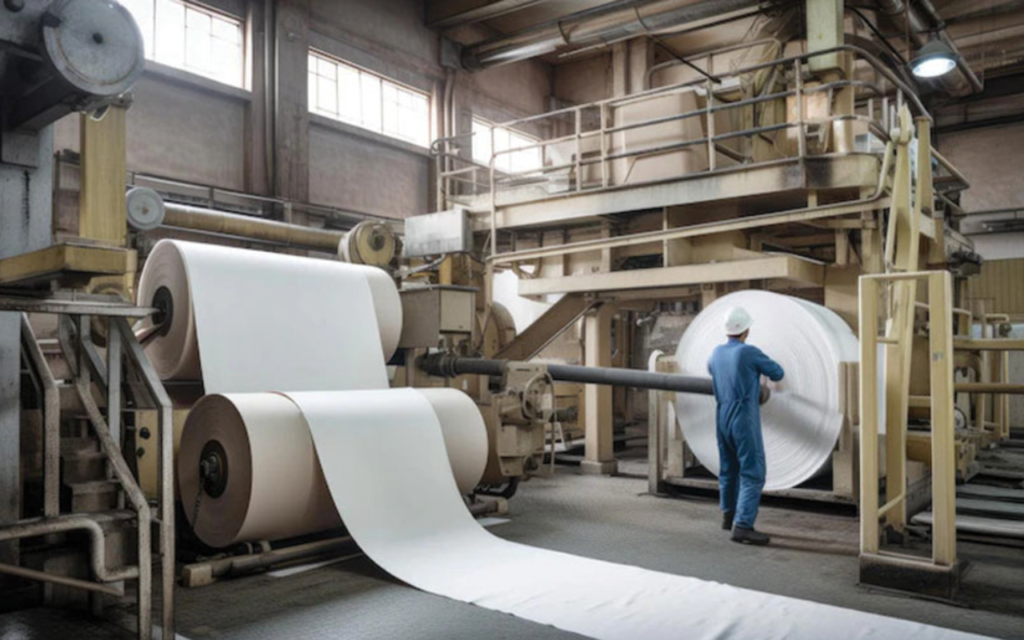Cellulose ether, a product obtained by etherification of insoluble and infusible cellulose, has many important properties, including solution thickening, good water solubility, suspension or latex stability, protective colloid effect, film-forming property, water retention properties, adhesive properties, non-toxic, tasteless, biocompatibility; thixotropy, etc. In addition, cellulose ethers have many unique properties: thermal gelling, surface activity, foam stability, thixotropy, ionic activity, and added gelling effect. Due to these properties, cellulose ethers are widely used in many fields such as oil mining, textiles, synthetic detergents, mining, papermaking, food, medicine, cosmetics, coatings, building materials, polymerization reactions, aerospace, and aviation, and are known as “industrial monosodium glutamate.”
Construction industry

Cellulose ethers are widely used in the building materials industry and are used in large amounts as retarders, water-retaining agents, thickeners, and binders. In joint dry-mix mortar, high-efficiency exterior wall insulation mortar, self-leveling mortar, dry powder plastering adhesive, ceramic tile bonding dry powder mortar, high-performance building putty, anti-cracking interior and exterior wall putty, waterproof dry-mix mortar, gypsum plaster, scraping filler, thin-layer joints, and other materials, cellulose ethers play an essential role. They have a significant impact on the water retention, water demand, solidity, retardation, and constructability of the stucco system. Commonly used cellulose ethers in building materials include HEC, HPMC, CMC, PAC, MHEC, etc. Nonionic water-soluble cellulose ethers have adhesive properties, dispersion stability, and water retention capabilities and are helpful additives for building materials. HPMC, MC, or EHEC are used in most cement-based or gypsum-based building materials, such as masonry mortar, cement mortar, cement coating, gypsum, cementing mixture, and emulsion putty to enhance the dispersion of cement or sand and significantly improve the bonding properties, which is very important for plaster, tile cement, and putty. HEC is used in cement not only as a retarder but also as a water-retaining agent. HEHPC also has this use. Cellulose ethers are often used in mortars in combination with gluconates as valuable retardant additives. MC or HEC are usually combined with CMC, starch derivatives, and polyvinyl acetate as thickeners and binders for wallpaper glue. In Southern Europe, CMC is a vital component of wallpaper glue. Medium or high-viscosity cellulose ethers are used in wallpaper adhesives and building materials.
Paint
MC, EHEC, HEC, non-thixotropic, and pure CMC are often used in latex and water slurry coatings, mainly to thicken and disperse pigment particles. When the rheology is adjusted from a pseudoplastic fluid to an approximately Newtonian fluid, the application performance of thixotropic and semi-gloss coatings will improve. By selecting glyoxal-crosslinked products with good dispersion and increasing the dissolution rate, it is possible to add thickeners directly to the pigment particles.
Organic-soluble MC, EHEC, and HPC are used in solvent-based coatings to prevent the evaporation of solvents (such as methylene chloride-ethanol mixtures).

ceramics
All water-soluble cellulose ethers can be used as green binders in ceramic production. Pure non-ionic cellulose ether has no ash residue and a small amount of CMC. MHPC, combined with propylene glycol, can be used as a primary molding binder for ceramic capacitors and alumina porcelain. CMC can also be used as a plasticizer for electric and glazed porcelain.
Textile industry
Cellulose ethers are useful sizing agents, the most commonly used being CMC and HEC; crude CMC can be used for this purpose. CMC is used for sizing fabrics in the sizing process and has the characteristics of easy de-sizing. CMC is also often used in combination with starch. After resizing, only a small amount of wastewater is produced, so the BOD is low. It may be used as a relatively permanent treatment in fabric production, where the fabric is presoaked in ether and then treated with acid and heat. Hydroxyethylcellulose also finds use in textiles.
Most cellulose ethers (such as carboxymethyl cellulose, hydroxyethyl cellulose, methylcellulose, etc.) are effective thickeners in textile printing and pasting. Hydroxyethyl cellulose can be further used in carpet dyeing and non-textile bonding. Carboxymethylcellulose is also suitable for coating and thickening textiles.
Paper industry
Carboxymethyl cellulose with a low degree of substitution can be used as an additive or stirred and sized to promote chemical hydration of the fiber. Better hydration can improve dry strength. Highly substituted carboxymethylcellulose or nonionic water-soluble cellulose ethers can be applied to paper sizing using standard equipment, such as pulp filter presses, matte machines, and non-mechanical coatings. Due to the reduced penetration of the wax plate, the wax consumption is reduced during coating. In addition, the consumption of printing ink is also reduced, the surface gloss is improved, the paper is smooth, and the oil resistance is improved.

Oil industry
In petroleum drilling and cementing fluids, various cellulose ethers are used as fluid loss reducers and viscosity control agents. In fracturing fluids, cellulose ether can be used as a gel polymer, fluid loss prevention agent, and friction-reducing agent. It can also be used as an oil-displacing agent to resist soluble salt pollution and increase oil production. Available varieties include CMC, PAC, HEC, HPCMC, CMHEC, etc. Drilling fluid, or drilling mud, is an aqueous dispersion of clay, bentonite, and other materials such as barite. Crude or pure carboxymethyl cellulose can be used as a thickening agent to prevent the sinking of drilling materials during transportation. The carboxymethyl cellulose used in drilling mud must meet certain specifications, including salt compatibility, viscosity, and fluid loss performance. When porous permeate layers are drilled, fluid loss decreases with the amount of carboxymethyl cellulose added and its degree of substitution (DS).
Hydroxyethyl cellulose can also be used as an additive and thickener in oilfield cement with high salt concentrations (calcium chloride, calcium bromide, or zinc chloride) for oil well maintenance and refinement fluids.
One additive used in oil drilling technology is carboxymethyl hydroxyethyl cellulose, which contains anionic groups that combine the compatibility of hydroxyethyl cellulose for salts with the affinity of carboxymethyl cellulose for clay.




